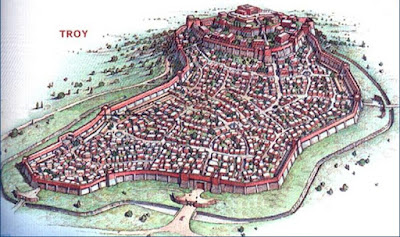Cappadocia, Turkey is the historic area of central Anatolia bounded by the towns of Hacıbektaş, Aksaray,Niğde and Kayseri (map). It was known as Cappadocia in ancient times, and is still called Kapadokya informally today.
Cappadocia is Turkey's most visually striking region, especially the "moonscape" area around the towns of Ürgüp, Göreme, Uçhisar, Avanos and Mustafapaşa (Sinasos), where erosion has formed caves, clefts, pinnacles, "fairy chimneys" and sensuous folds in the soft volcanic rock.
Although the volcanic landscape can appear inhospitable, the mineral-rich soil is excellent for growing vegetables and fruits, making Cappadocia a rich agricultural region. It has always been one ofAnatolia's prime grape-growing areas, and still boasts many productive vineyards and wineries.
The Bible's New Testament tells of Cappadocia, but in fact this part of central Anatolia has been important since Hittite times, long before the time of Jesus.
Prime activities here are visiting the historic painted cave churches of the many monastic valleys (especially the Göreme Valley and Zelve Valley), flying in a hot-air balloon at dawn above the incredible landscape, hiking the volcanic valleys (especially theRose Valley [Güllüdere]), and spending the night in acomfortable cave hotel room with all the modern comforts. Here are the highlights of what to see and do in Cappadocia. Here's a list of the towns of Cappadocia.
For an excellent full-day excursion, drive to the surprising underground cities at Derinkuyu and Kaymaklı and the formerly Ottoman-Greek mountain town of Güzelyurt before taking a hike of several hours in the Ihlara Valley.
You may also want to spend a half-day hiking the less-visited Soğanlı Valleys of southern Cappadocia, south of Mustafapaşa. Another great excursion is to the Byzantine Iconoclastic rock-hewn monastery at Eski Gümüşler near Niğde.






























